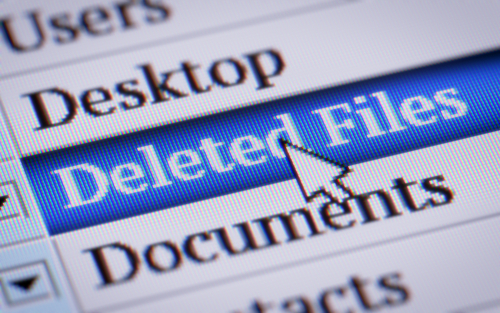It’s not uncommon for companies to look for ways to turn losses into profits, and the baby carrot, of all things, is a perfect example of this. California carrot farmer Mike Yurosek came up with the idea for the baby carrot in 1986 after growing tired of discarding a significant percentage of his crop due to imperfections. Using an industrial green bean cutter and a potato peeler, he created the original “baby-cut” carrot, and as a direct result carrot consumption in the US more than doubled over the next 15 years. But eDiscovery costs aren’t produce. Most law firms see it as a cost they simply have to absorb. Others will outsource eDiscovery work and pass the bill on to the client. However, with the right cost recovery tactics, the litigation support team can become one of the most profitable divisions in the firm or agency, essentially turning a cost center into a profit center.
5 Models for Recovering eDiscovery Costs for Law Firms
The following analysis was created by polling a sample set of law firms from medium and large markets across the United Sates. For the majority, turning their investment into a profit center isn’t necessarily the goal; however, they do want to recover the investment made in the software and infrastructure required for eDiscovery work.
To clarify, eDiscovery in this case refers to:
- ECA (ingestion for mass analysis and culling of data prior to review)
- Review (on-line searching, tagging, coding, analytics, TAR, etc.)
- Processing and Production (conversion to TIFF or PDF, if needed, with endorsements)
eDiscovery software is just one component for which firms wish to recover cost. Additionally, there
is hardware, backups, IT, Database Administrators, support staff, and 3rd party software if hosted by the firm. If a firm decides to go the Managed Services or IaaS route, then there are monthly costs associated with storage and machine rentals which firms wish to recover.
The concepts below are listed in no particular order. In some instances, combinations of the concepts can be used.
Concept 1
The Traditional (Hourly Billing Only)
- $10/hr – $25/hr = Machine Time
- $100/hr = Tech Time
- $150/hr = Project Management Time
- $10/GB – $25/GB for ongoing storage (a few firms charged for storage, while others did not)
Concept 2
The Ingester (Bill for Ingestion of Data Only)
- $150/GB = Data ingestion
- One flat fee for any data brought into their system, no additional fees for: culling, processing, productions, storage, etc.
*One firm with on-prem enterprise software recouped their initial year 1 spend within 3 months of implementation of this model
Concept 3
The Vault (Storage Billing Only)
- $20/GB/moth = Data storage
That’s it, one flat fee for any data stored by the firm; no additional fees for ingestion, culling, processing, productions, user fees, etc.
*One firm who has enterprise software in an IaaS turned this model into a profit center for them; they are now considering lowering their storage costs further.
Another firm polled wanted to move to this model (although at a lower cost) simply to combat their growing storage concerns and were less concerned about the initial up-front work considered the cost of doing business for internally-kept projects.
Concept 4
Bill Like a Service Provider
Pre-Processing and Culling
- $50/GB – $150/GB = Data ingestion and indexing (some firms gave this away and only charged for data promoted into review after initial culling)
- $25/GB = Culling of data (only one firm sampled charged for this; all others included the culling at no cost)
- $50/GB – $150/GB = Data promoted to review after ingestion and culling (the firms that charged in this area typically didn’t charge for the initial ingestion of data; if they did, it was in the $10/GB – $25/GB range)
Review
- $75/user – $125/user = Monthly license costs for review software (about half the firms sampled did not charge for these licenses)
- $5/GB – $35/GB for ongoing storage (a few firms charged for this, some did not charge any storage)
- $50/GB – $150/GB = Analytics technologies applied (near dupe, email threading, concept indexing, cluster and category creation — a few firms only charged machine time for the Analytics indexing)
- $75/GB – $200/GB = TAR technologies applied (a few firms only charged machine time for the TAR indexing)
Processing and Production
- $100/GB – $350/GB = Processing s (conversion of native file to TIFF or PDF)
- $0.05/document – $0.15/document = Production
- OR – $0.02/page – $0.05/page = Production
Concept 5
Bill Like a Service Provider, Take 2
One firm sampled told us they go out every year and poll the local, regional, and national vendors for pricing and services in each market. Then, they compare the pricing and services gathered with the firm’s services offered and average the pricing across-the-board.
Once the firm has calculated the averages, they reduce the average price by 50% before presenting the eDiscovery costs to their corporate clients. They also make the point that IP protected by keeping data on their systems, and if help is needed from other people or parties, they can securely access the environment through the web to assist with services or managed review.
Conclusion:
As the eDiscovery space becomes more and more competitive with corporations bringing operations in-house, growing datasets, and the complexity of new data sources, alternative billing models could give mid-size to large law firms a chance to offset or even reverse costs associated with eDiscovery.
It’s easy to get caught up in a “we’ve always done it this way” mentality. Then again, I’m sure no one imagined the cut-and-peeled nub of a misshapen carrot could change the agriculture industry.
Written by Jim Gill
Content Writer, Ipro












